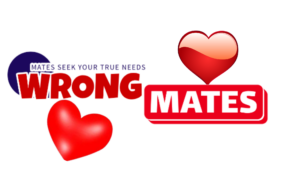:max_bytes(150000):strip_icc():format(jpeg)/GettyImages-147205283-2f19c07824ef4b91b810290b3cc6a5fb.jpg)
The concept of the hive mind is most easily applied to insects such as bees or ants. It’s the group intelligence that emerges when these species work as a unit. But there are other examples in which human intelligence makes up a hive mind. In popular culture it’s often portrayed as a bad thing. Civilizations like the Borg on Star Trek or Doctor Who‘s Cybermen have assimilated large groups of people into their vast collective, but have eliminated their ability to think as individuals.
In reality, though, hive mind in humans “involves a collective collaboration in decision-making processes,” says Cristina Dovan, a digital entrepreneur, writer, and Certified Mindvalley Life Coach focused on mindset and transformation.
This leads to a collective intelligence that, according to Dovan, “brings comfort and unity to a group that is pulling in the same direction. [But] it can also harbor the possibility of inhibiting critical thinking in the members of the group, leading to the risk of impeding progress.”
Let’s look at the characteristics and science behind the hive mind, explore applications of the hive mind in human society, differentiate hive mind from groupthink, and look at the hive mind in the digital age.
Characteristics of Hive Mind
People can behave very differently in groups, where they adopt or get caught up in the prevailing patterns and group dynamics,” says Siobhan McHale, the author of the upcoming book The Hive Mind at Work: Harnessing the Power of Group Intelligence to Create Meaningful and Lasting Change. “These patterns start to influence behavior almost as soon as someone enters a new workplace or other human ‘ecosystem.’” This can lead to faster progress and better results.
Per Dovan, some of hive mind’s most important characteristics include:
- Collective intelligence and shared knowledge
- Coordination and cooperation
- Communication
- Distributed decision-making
- Identity fusion
- Organized structure and synchronization
The Science Behind Hive Mind
The concept of the hive mind comes out of several disciplines including biology, computer science, psychology, neurology, and social science. “It describes a network of many entities that can refer to bees and ants but also neurons and humans,” says Dovan.
For example, the neurons in our brains seem to operate a lot like the bees in a hive, in that, like the hive, our brains have multiple, often conflicting interests that must come to a consensus. Of course, brains usually come to a consensus in fractions of a second, so we don’t notice the conflict and indecision.
On a broader scale, tribes, cities, countries, and internet collectives are superorganisms that can have hive minds. For example, the practice of editing and using the global encyclopedia Wikipedia could be seen as a hive mind.
Examples and Applications of a Hive Mind
McHale shares the story of Albert Bourla to illustrate the hive mind in action in human society. “Bourla was the newly appointed CEO at Pfizer when, in March 2019, COVID-19 swept around the world. Bourla began to challenge everyone in the pharmaceutical company to… develop a vaccine more quickly than anyone had ever done before.
“Bourla… recognize[d] the siloed pattern that had been embedded in the scientific community for decades. Researchers at Big Pharma A and B worked in their labs in almost complete isolation from one another. [So] he released a five-point plan that enshrined collaboration as the guiding force to steer Pfizer employees and its Big Pharma peers in a joint effort to defeat the coronavirus.
“Researchers began to share insights, tools, data, expertise, and capability and less than nine months later the Pfizer vaccine became the first fully tested COVID-19 vaccine approved for emergency use.”
This is an example of the hive mind working for good. The company had 79,000 employees across more than 125 countries and Bourla figured out how to get them all talking, harnessing the power of collective intelligence to solve a problem.
Dovan cites other examples of how hive mind can harness the power of group intelligence for the collective good, including crowdsourcing within online communities to solve problems in various fields. “These are examples of how group collaboration outperforms the power of any individual. However.” she says, “this doesn’t mean that the individuals involved in these activities have lost their decision-making ability as individuals in other areas of their lives.”
There are many benefits of incorporating hive mind principles into human decision-making processes. They include faster, better, and more creative decisions, increased energy, better problem-solving, a desire to learn, and increased initiative in pursuit of an answer.
However, there are some limitations too. For example, McHale notes that a boss could make everyone in their company a mindless drone, turning off their creativity and their initiative, by failing to consult their people on important decisions. Adds Dovan, hive mind “can pose a threat to safety and security if not handled properly…. It can [also] lead to groupthink.”
Hive Mind and Groupthink
When people in a hive mind work in collaboration, sometimes this can morph into groupthink. Groupthink, occurs when a group of people are so driven by a desire to cohere that it results in a tendency to agree at all costs.
Says Dovan, groupthink “leads to suppressing critical thinking in individuals [and] discouraging dissenting opinions. [This] result[s] in poor outcomes. It can also have repercussions like inefficiency and wasting resources, conflicts and competitive dynamics because the decision-making process is made without proper analysis.”
For example, the online group QAnon encouraged groupthink by grooming others to spread false information and repressing dissent and analytical thinking about the information it was spreading.
Hive mind behavior, when not deployed properly, can have potential risks and drawbacks. In addition to groupthink, it could also suffer from dysfunctions including “overcompetitiveness, greed, disrespect, and bullying,” says McHale. Dovan notes that when hive mind behavior is managed ineffectively and leads to groupthink, people can suffer from coordination challenges and have bias and inefficiency baked into their thinking.
Strategies to Mitigate the Negative Aspects of Hive Mind
There are several ways to mitigate the negative aspects of hive mind, including:
- Encourage diversity and inclusion: According to Dovan, diversity and inclusion is one way to prevent people from falling into the bias of groupthink.
- Develop group intelligence: Group intelligence, says McHale, “is the ability to understand and effectively intervene in groups to get work done or make change happen.” With group intelligence you can get people to work together while still having their own thoughts and feelings.
- Safe and open communication: Safe and open communication, explains Dovan, can encourage critical thinking and implement quality decision-making processes that ensure the smooth operation of the group.
Hive Mind in the Digital Age
The internet and particularly social media is an amplifier of hive mind behavior. “[On social media] it is easier for members to connect and communicate, leading to a diversified and innovative decision-making process,” says Dovan. “The internet can also provide access to a wide range of information, which can benefit and enhance the quality of solutions and results.”
But social media also has many drawbacks, Dovan explains, including the spread of fake news, echo chambers, and bubbles, which show information that only aligns with people’s preferences and beliefs. As a result, social media can have “a big influence on groupthink behavior and it can easily attract those with poor critical thinking skills, which make polarization and division easier.”
Online communities whose structure and engagement patterns are particularly prone toward hive mind behavior, observes Dovan, include Reddit, Quora, Wikipedia, Kaggle, and Github. These “forums and crowdsourcing platforms all have in common the use of crowd wisdom in solving problems.”
Ethical Considerations of Hive Mind in the Digital Realm
According to Dovan, there are numerous ethical considerations associated with the hive mind in the digital age. They include:
- Accountability and responsibility: Online communities need to make sure their members are upholding the rules and regulations of the platform. If members of the platform feel they are responsible for the rules, they will continue to feel responsible for their decisions and actions.
- Transparency: In order to avoid manipulative practices, platforms need to find ways to be transparent about what they are doing and how they are doing it. This will also ensure that people avoid the negative influences that promote bias and division.
- Teach healthy usage patterns: It’s important to teach healthy usage patterns for social media, especially among young people whose mental health is negatively impacted. The platforms could limit daily usage or times of day that people can log on, or at least have parental tools so parents can do this for their children.
- Resources to aid in mental health and wellbeing: The platforms need to have a bigger presence for mental health and wellbeing resources. While it may be counterintuitive to have those resources on the very platforms that are driving the mental health crisis, if young people and others are on these platforms, having this information there is necessary and desirable.
- Better controls for negative influences: Bad actors should be punished and eventually banned from platforms if they continue their negative behavior, like spreading lies and fake news.
Future Implications and Controversies
The spread of technology and especially AI around the globe have made the future implications of hive mind all the more crucial. Some of the most controversial issues include political polarization, discrimination, and climate change debates, says Dovan. Because of these things, there’s an even greater need “for governments and organizations to set clear rules and regulations in order to maintain the ethical use of hive mind dynamics.”
For example, hive mind can come up with solutions to parts of the climate crisis or figure out ways to alleviate political polarization, but that’s only if the people spearheading those issues are open to others’ ideas and bad actors don’t get in the way. That’s why, according to McHale, leaders who understand and can navigate the hive mind are needed now more than ever.
Wrapping Up
Capitalizing on the benefits of a hive mind can be a great boon to society. It can help produce solutions to many problems, whether they’re large—like how to invest in the stock market—or small—like household tips.
But with these benefits come many drawbacks, including groupthink, fake news, and other people controlling the flow of information. To make sure you don’t fall prey to these problems, make sure you retain the power to think and make decisions for yourself.

